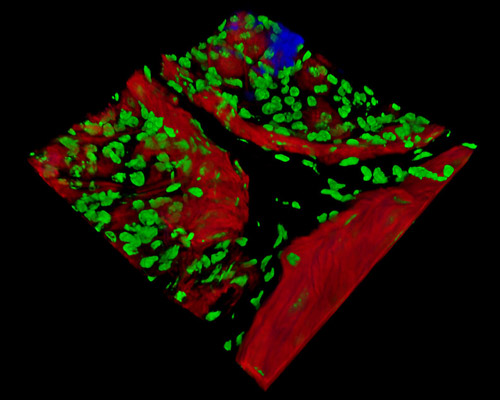Mouse Stomach Tissue

The digital image featured above depicts a three-dimensional reconstruction of a 30-micrometer section of mouse stomach tissue stained with Alexa Fluor 350 (wheat germ agglutinin; highlighting lectins), Alexa Fluor 568 (phalloidin; labeling actin filaments), and SYTOX Green (nuclei). The stomach functions to protect itself from a wide array of intrinsic and exogenous stress factors and irritants. The gastric mucosa, the layer of mucous membrane that contains the glands and gastric pits, is maintained through a multifaceted resistance against acid, which includes regulation of the mucosal environment by bicarbonate and mucus secretion, the epithelial barrier, and subepithelial blood flow and nerves with defensive mediators.



